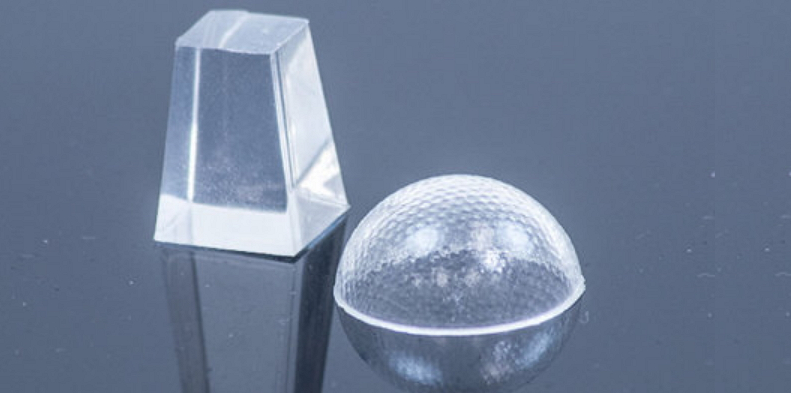As additive manufacturing and 3D printing reach further into the product design community, researchers and developers are pushing the envelope to come up with a new array of materials suitable for the job. Protomold Company, and subsidiary Proto Labs, Inc., were formed by Larry Lukis in 2012 to provide Additive Manufacturing services and molding technology.
Now the rapid prototyping and low-volume manufacturer says they’ve added optical-grade liquid silicone rubber (LSR) to their existing offering of moldable plastic, metal and LSR materials.
“In a lighting application, for example, you have a lens and seal that would traditionally be two parts. With optical LSR, you can combine the two into a single part, which reduces cost and overall inventory,” says Jeff Schipper, the product manager for LSR at Proto Labs.
He adds that the engineering-grade thermoset offers benefits for engineers developing components and products within the lighting industry. It’s said that optical LSR does not discolor – or lose transparency – with age or exposure to heat or UV light. Schipper adds that the material is also significantly lighter than glass and most other plastics. It’s also scratch and crack resistant.
LSR has a low viscosity which allows it to flow easily within a mold to allow the material to move through thin areas and fill small voids, and it allows for molding of thinner walls than could normally be produced with other resins. The material cools without creating significant sink or internal stresses, and its dimensional stability allows accurate production of lenses. Reduced likelihood of sink also permits designs with thicker walls than would be acceptable in other resins.
Proto Labs says LSR objects feature a clarity second only to glass, and that they can withstand heat in proximity to high-output LEDs while remaining flexible enough for rough duty, outdoor and automotive uses.
“One of the more exciting aspects that optical silicone presents to a designer is its ability to reduce the bill of materials in a final assembly,” Schipper says. “In a lighting application, for example, you have a lens and seal that would traditionally be two parts. With optical LSR, you can combined the two into a single part, which reduces cost and overall inventory.”
If you’d like to hear more about optical-grade LSR, Proto Labs is on hand this week in Las Vegas at the Strategies in Light conference. They plan to discuss optical LSR, quick-turn injection molding, CNC machining and 3D printing capabilities there as well.
Have you ever created an object which could use materials like optical grade LSR? Let us know in the LSR Optical Printing Material forum thread on 3DPB.com.
